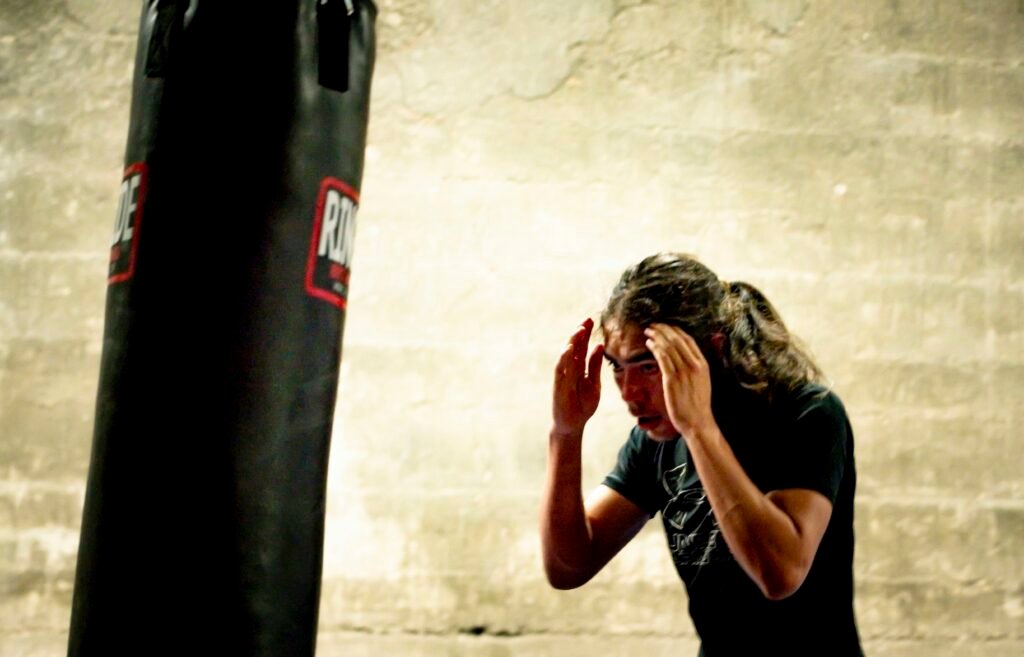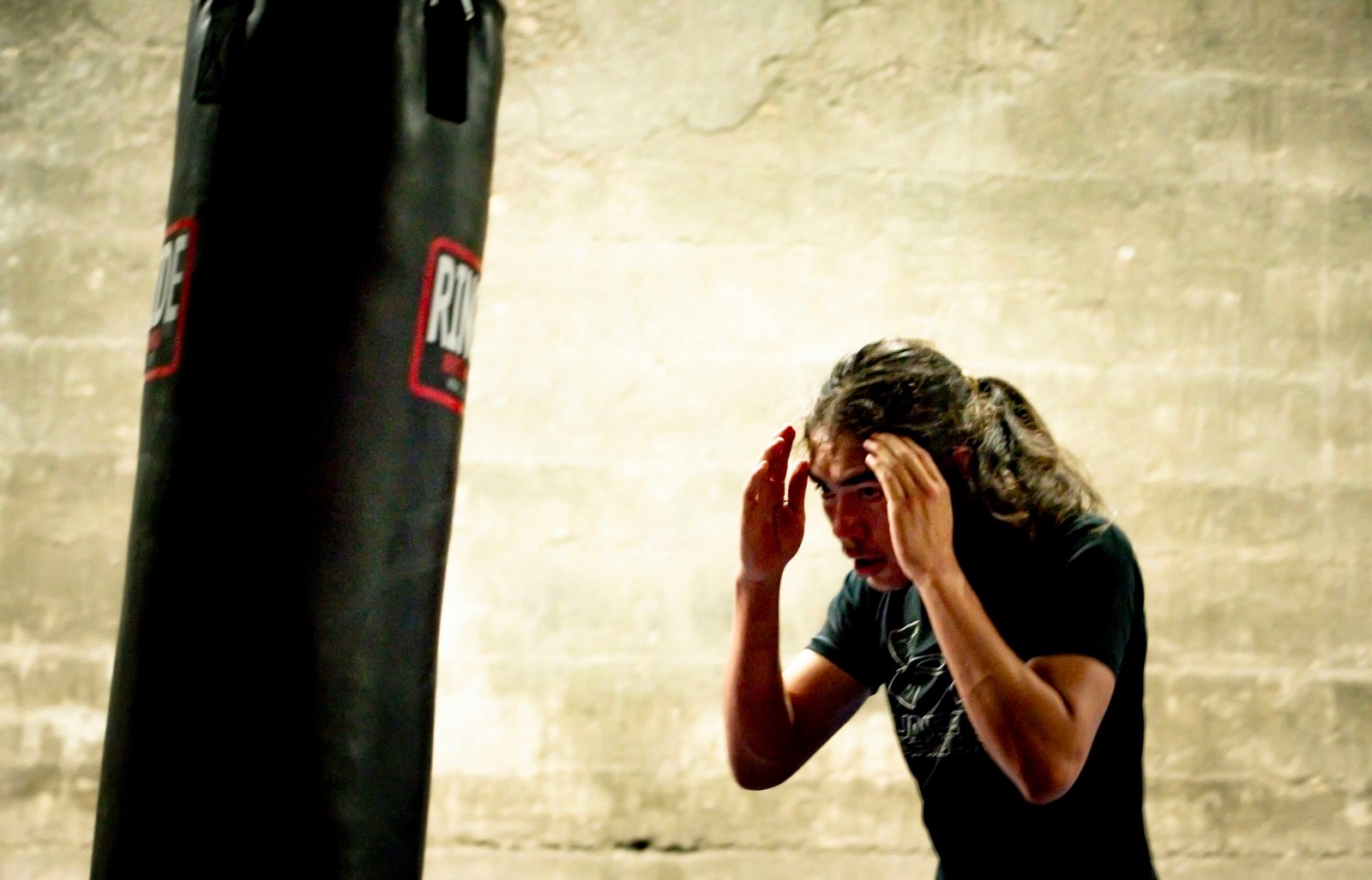Have you ever wondered how training techniques in MMA have evolved over time?
If you’ve been following mixed martial arts (MMA) for a while, you may have noticed that the training methods and techniques used by fighters have evolved significantly over the years. In this article, we’ll take a closer look at the progression of training techniques in MMA and how they have shaped the sport into what it is today.
The Early Days of MMA Training
Back in the early days of MMA, fighters typically came from a background in a single martial art discipline. This meant that their training focused primarily on that one style, whether it be Brazilian Jiu Jitsu, Muay Thai, wrestling, or boxing.
Fast forward to today, where fighters are well-rounded in all aspects of the combat sports.
Fighters now train in a variety of different disciplines to become more well-rounded athletes. This means they incorporate elements of striking, grappling, wrestling, conditioning, and more into their training routines.
The Impact of Cross-Training
One of the biggest shifts in MMA training over the years has been the emphasis on cross-training. Fighters now realize that to be successful in the sport, they need to be proficient in all areas of fighting.
Let’s take a look at how cross-training has revolutionized MMA training techniques.
| Discipline | Focus | Benefits |
|---|---|---|
| Brazilian Jiu Jitsu | Ground fighting, submissions | Improved grappling skills |
| Muay Thai | Striking, clinch work | Enhanced stand-up game |
| Wrestling | Takedowns, control | Strong foundation for MMA |
| Strength and Conditioning | Endurance, power | Increased overall fitness |

This image is property of images.unsplash.com.
The Evolution of Strength and Conditioning in MMA
In the early days, MMA fighters focused mainly on their martial arts skills and didn’t pay much attention to strength and conditioning. However, as the sport evolved, athletes started to realize the importance of being physically fit and strong in addition to being skilled in their chosen martial art.
How has strength and conditioning training changed the game for MMA fighters?
Strength and conditioning training now plays a crucial role in an MMA fighter’s overall performance. This type of training helps improve power, endurance, speed, and agility, giving fighters an edge over their opponents.
The Importance of Functional Training
One of the key aspects of strength and conditioning training in MMA is functional training. This type of training focuses on exercises that mimic the movements and demands of the sport itself, helping fighters build functional strength that directly translates to their performance in the cage.
Let’s break down some common functional training exercises for MMA fighters.
| Exercise | Focus | Benefits |
|---|---|---|
| Deadlifts | Lower body strength | Improved takedowns, explosiveness |
| Plyometric jumps | Explosive power | Increased speed and agility |
| Medicine ball throws | Core and upper body strength | Enhanced striking power |
| Battle ropes | Cardiovascular endurance | Improved overall conditioning |

This image is property of images.unsplash.com.
The Role of Technology in MMA Training
Another factor that has significantly impacted the progression of training techniques in MMA is the use of technology. From advanced video analysis to wearable devices that track performance metrics, technology has revolutionized how fighters train and prepare for their fights.
How has technology changed the way MMA fighters train?
Technology has allowed fighters to track their progress, analyze their techniques, and make data-driven decisions when it comes to their training. This has led to more efficient and effective training methods that help fighters maximize their potential in the cage.
Let’s explore some of the ways technology has been integrated into MMA training.
| Technology | Application | Benefits |
|---|---|---|
| Video analysis | Technique improvement | Fine-tuning skills and strategies |
| Wearable devices | Performance tracking | Monitoring heart rate, calorie burn |
| Virtual reality | Mental preparation | Visualizing fights and scenarios |
| Biometric sensors | Health monitoring | Avoiding overtraining and injuries |
Adaptation of Recovery Techniques
In addition to training methods, recovery techniques have also evolved in MMA to help fighters stay healthy and perform at their best. Proper recovery is essential for preventing injuries, reducing muscle soreness, and maintaining overall physical and mental well-being.

This image is property of images.unsplash.com.
What are some popular recovery techniques used by MMA fighters?
Recovery techniques such as ice baths, foam rolling, massages, and cryotherapy have become staples in an MMA fighter’s routine. These methods help reduce inflammation, speed up recovery, and keep fighters in optimal condition between training sessions.
The Importance of Nutrition and Weight Cutting
Nutrition plays a vital role in an MMA fighter’s performance, as fueling the body with the right nutrients is crucial for energy, recovery, and overall health. In addition to proper nutrition, weight cutting is another aspect of training techniques in MMA that has evolved over time.
How do nutrition and weight cutting impact an MMA fighter’s performance?
Proper nutrition helps fighters maintain energy levels, support muscle recovery, and stay healthy overall. However, weight cutting, which involves losing weight before a fight to make a specific weight class, can be a dangerous practice if not done correctly.
Let’s discuss some nutrition tips for MMA fighters and the safe way to approach weight cutting.
| Nutrition tip | Benefit | Safe weight cutting approach |
|---|---|---|
| Hydration | Improves performance | Gradual weight loss |
| Balanced diet | Supports recovery and energy | Work with a nutritionist or dietician |
| Timing of meals | Optimal energy levels | Monitor weight loss progress |
| Post-weigh in fueling | Replenishing energy quickly | Avoid severe dehydration |
Integration of Mental Training
While physical training is essential in MMA, mental training is equally important for fighters to perform at their best. Mental training helps fighters stay focused, control their emotions, and develop mental toughness to overcome challenges inside and outside of the cage.
How has mental training become a crucial part of an MMA fighter’s training routine?
Mental training techniques such as visualization, meditation, goal-setting, and positive self-talk have become common practices among MMA fighters. These techniques help fighters stay calm under pressure, develop a winning mindset, and build confidence in their abilities.
Let’s explore some mental training exercises that MMA fighters use to prepare for fights.
| Mental training exercise | Purpose | Benefits |
|---|---|---|
| Visualization | Mental rehearsal of fights | Improved focus and performance |
| Meditation | Stress reduction and focus | Improved mental clarity |
| Goal-setting | Setting targets and objectives | Motivation and direction |
| Positive self-talk | Building self-confidence | Overcoming doubts and fears |
Future Trends in MMA Training Techniques
As MMA continues to evolve as a sport, we can expect to see further advancements in training techniques that will push fighters to new levels of performance. From the integration of artificial intelligence to personalized training programs based on biometric data, the future of MMA training is filled with exciting possibilities.
What are some future trends that we can expect to see in MMA training techniques?
Future trends in MMA training may include the use of virtual reality for fight simulations, personalized nutrition plans based on genetic testing, and remote coaching through digital platforms. These advancements will revolutionize how fighters train, prepare, and compete in the sport.
In Conclusion
The progression of training techniques in MMA has come a long way since the early days of the sport. With a focus on cross-training, strength and conditioning, technology, recovery, nutrition, and mental training, fighters now have access to a wide range of tools and methods to help them reach their full potential in the cage. As MMA continues to evolve, we can expect to see even more innovations that will shape the future of the sport and its athletes.
Remember, it’s not just about how hard you train, but also how smart you train that can make all the difference in your performance as an MMA fighter. Embrace the evolution of training techniques, stay open to new methods, and always strive to improve your skills both inside and outside the cage.
